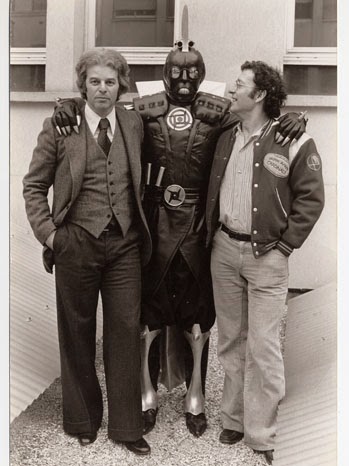As an
industry, Hollywood filmmaking is contracting. Fewer movies are being made each
year, and the movies that are being produced have higher and higher budgets.
All the thoughtful, mid-budget domestic dramas that might have been made twenty
years ago are not getting the green light, so that Captain Avengers: Rise of
the Winter Mockingjay Part 2 can have an additional 20 million dollars added to
its catering budget.
With 150 to
200 million dollars on the line, movie producers want as much of a slam-dunk
guarantee as they can get that they will earn their money back. And so, these
few tent-pole movies are crafted, polished, correlated, and focus-grouped
within an inch of their lives. They are intended to give audiences maximum easy
enjoyment and a minimum of intellectual, emotional challenge. Now, I’m all for
escapism. It’s a big part of why I love movies, but if that’s all we have to
choose from, we are losing out on a big part of what film can do for us.
This weekend
marks the ninth annual Hell’s Half Mile Film and Music Festival in Bay City.
Almost a decade ago, a small group of film buffs, programmers, and event
planners got together and decided the Great Lakes Bay Region needed a yearly
dose of music and movies that aren’t easily corralled, that are a little
untamed, maybe even edgy.
They named the festival after a stretch of road in
Bay City that, back in its rough and wild logging town days, was a long strip
of bars, brothels, and gambling houses. That part of town is a lot more family
friendly now, of course, but the movies the film festival brings still have
that spirit of wildness and unpredictability.
One film
that reflects the refreshing, unexpected spirit of the festival is Irish
filmmaker Terry McMahon’s movie Patrick’s
Day. The film has all the gloss of a Hollywood production – well-lit,
thoughtful cinematography, convincing professional performances from the
actors, a rousing pop soundtrack. Even the story, on its surface, seems like a
pretty standard boy-meets-girl-boy-loses-girl narrative. Despite all that,
Patrick’s Day is not your average multiplex movie. It tells the story of Patrick,
a 26 year old Dubliner who suffers from schizophrenia. He lives in a long-term
care facility, holds down a job, and gets regular visits from his protective
but damaged mother. Born on Saint
Patrick’s Day, the young man and his mom have a regular birthday outing
tradition – they go to the parade, eat at the same restaurant, wear silly wigs
and glasses. But this time, Patrick gets separated from his mother, and while
waiting for her to show up, he meets Karen, an attractive flight attendant who
is out for the evening clearly looking for trouble. The two of them hook up and
all sorts of complications ensue.
It has
elements of meet-cute romance, a coming of age story, an overcoming-physical
affliction narrative, and dark psychological drama – but it doesn’t comfortably
fit into any one of these categories.
Because it
is an independent film, it doesn’t have to fall into one safe genre designed to
appeal to one particular demographic. The film unfolds with a different rhythm
than a typical Hollywood film. It ends differently than you expect. The
conclusion is redemptive in a way, but it’s certainly not the comfortable,
unambiguous happy ending we’ve come to associate with movies as much as popcorn
and previews.
The film is
about the collision of love and damage, how those two things often come
together whether it’s in family relationships or romance, and how they often
try to cancel one another out. Patrick’s Day isn’t comfortable, escapist
entertainment, but that’s a good thing. It forces us out of our summer-movie
Teenage Mutant Ninja X-Men -induced state of escapism and asks us to try
something new. It’s something a little different, a little untamed. And who
couldn’t use a little unpredictability in their weekend?
Patricks’
Day screens today at 4 p.m. and again on Sunday at 4:30. The Hell’s Half Mile
Film and Music Festival runs through this weekend and tickets are still
available.
This review was originally broadcast on Q90.1, Delta College Public Radio. Learn more about the station at www.deltabroadcasting.org.
This review was originally broadcast on Q90.1, Delta College Public Radio. Learn more about the station at www.deltabroadcasting.org.








